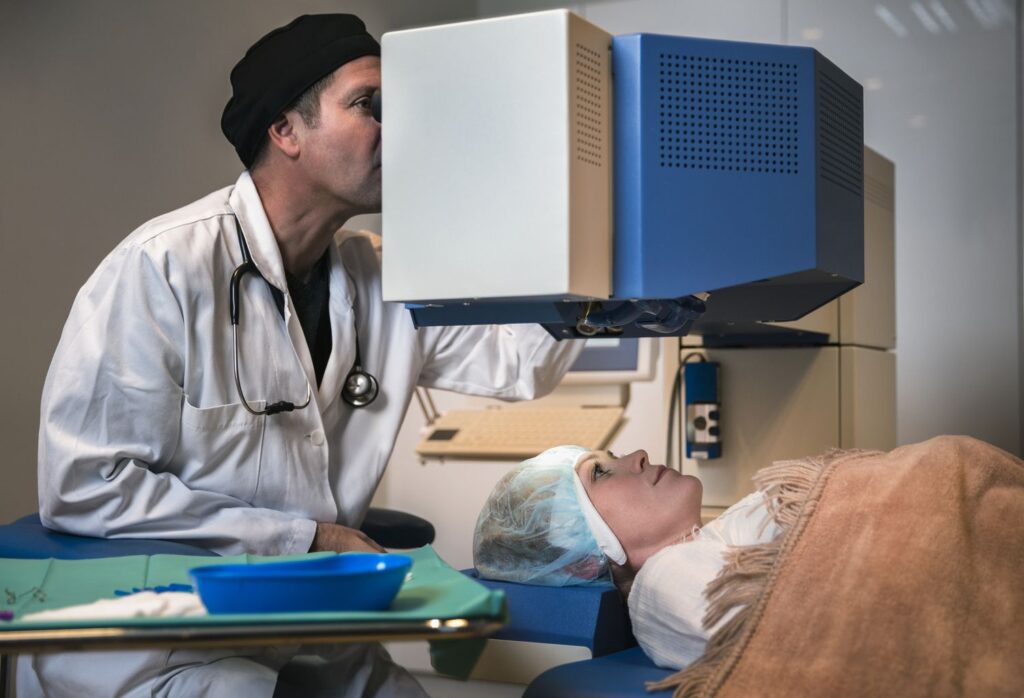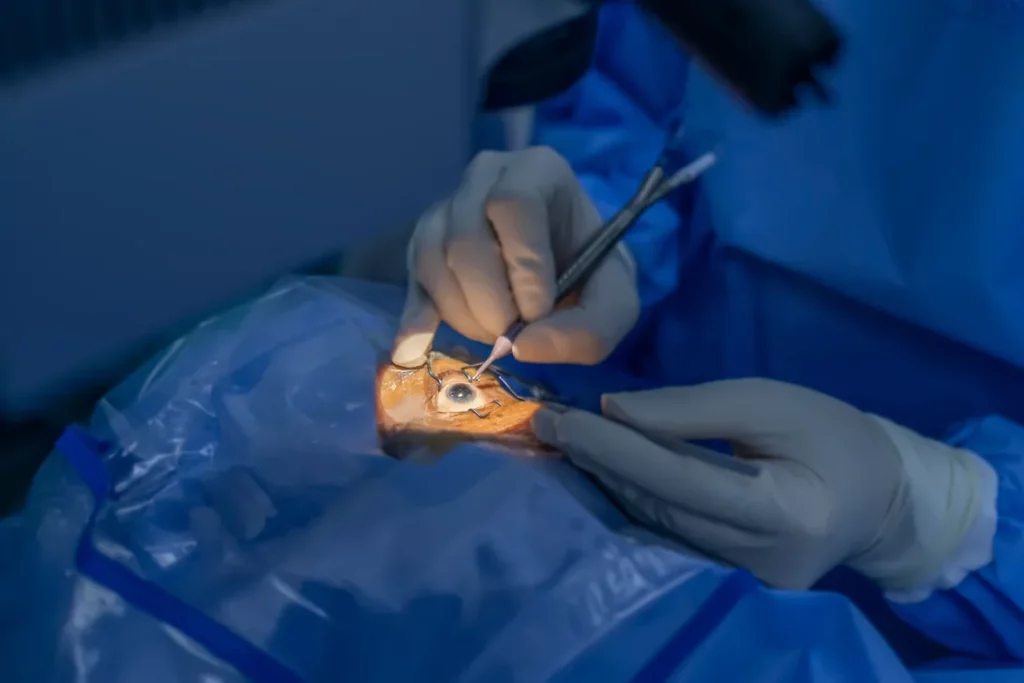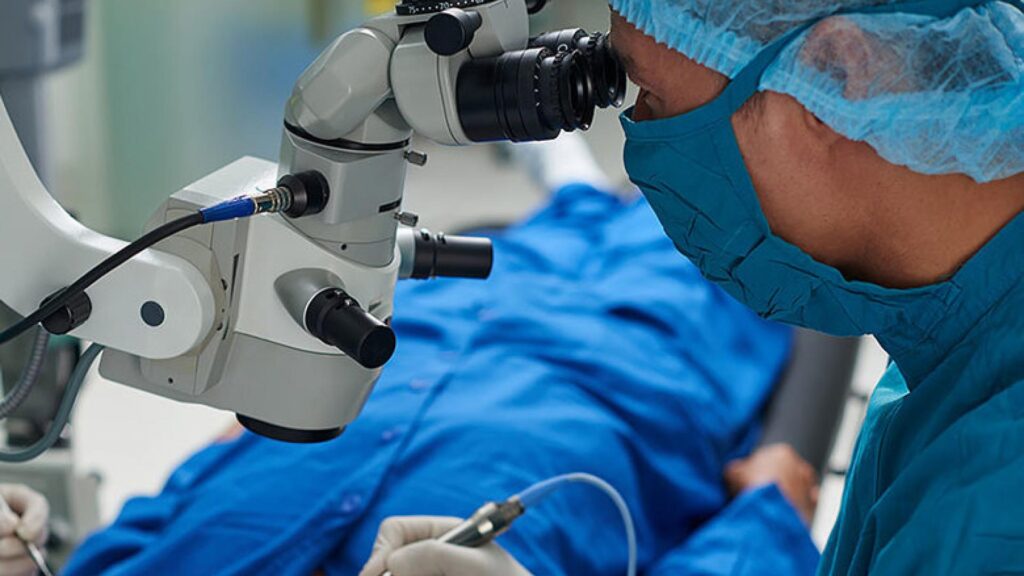Glaucoma Surgery: What You Need to Know About the Procedure

Glaucoma is a serious eye condition that can lead to vision loss if left untreated. In this article, we will explore the different aspects of glaucoma surgery and what you need to know about the procedure.
Understanding Glaucoma
What is Glaucoma?
Glaucoma is a group of eye diseases that damage the optic nerve, which is responsible for transmitting visual signals to the brain. It is often caused by increased pressure in the eye, known as intraocular pressure. If left untreated, glaucoma can result in permanent vision loss.
In conclusion, glaucoma surgery plays a vital role in managing the condition and preventing further vision loss. Early detection, regular eye exams, and awareness of the different types of surgeries available are crucial in combating this potentially irreversible eye disease. If you have any concerns about glaucoma or are experiencing symptoms, it is important to consult with an eye care professional who can provide you with the necessary guidance and recommend appropriate treatment options.
Glaucoma is a complex condition that affects millions of people worldwide. The optic nerve damage caused by glaucoma is irreversible, making early detection and treatment crucial in preserving vision. There are different types of glaucoma, including open-angle glaucoma, angle-closure glaucoma, and normal-tension glaucoma, each with its own set of risk factors and treatment options.
Causes and Symptoms of Glaucoma
The exact cause of glaucoma is still unknown, but it is often associated with a buildup of fluid in the eye, which increases intraocular pressure. Some people may have a higher risk of developing glaucoma, including those with a family history of the condition, individuals over the age of 60, and those with certain medical conditions such as diabetes or high blood pressure.
Regular eye exams are essential in detecting glaucoma in its early stages when treatment can be most effective. Eye doctors can measure intraocular pressure, examine the optic nerve, and assess visual field loss to diagnose and monitor glaucoma progression. Treatment options for glaucoma may include prescription eye drops, oral medications, laser therapy, or surgery, depending on the type and severity of the condition.
Glaucoma does not typically cause symptoms in the early stages, which is why it is often referred to as the “silent thief of sight”. However, as the condition progresses, symptoms may include blurred vision, severe eye pain, headaches, halos around lights, and loss of peripheral vision.

The Importance of Early Detection
Regular Eye Exams and Glaucoma
Regular eye exams are crucial for the early detection and prevention of glaucoma. During an eye exam, your ophthalmologist can measure your intraocular pressure and examine the optic nerve for any signs of damage. Early detection allows for prompt treatment and can help prevent vision loss.
Furthermore, early detection of glaucoma is vital because this eye condition often develops slowly and without any noticeable symptoms in its early stages. By the time symptoms become apparent, significant vision loss may have already occurred. This is why regular eye exams, even when you have no vision complaints, are essential in catching glaucoma early and preserving your eyesight.
Risk Factors for Glaucoma
While anyone can develop glaucoma, certain factors may increase your risk. These include age, family history of glaucoma, race (people of African, Hispanic, or Asian descent are at higher risk), and certain medical conditions such as diabetes and high blood pressure. It’s important to be aware of these risk factors and discuss them with your eye care professional.
In addition to these common risk factors, individuals with a history of eye injuries, prolonged use of corticosteroid medications, or extreme nearsightedness may also have an increased risk of developing glaucoma. Understanding these risk factors and their implications can empower individuals to take proactive steps in monitoring their eye health and seeking timely medical intervention when necessary. Learn more about risk on https://ocro.stanford.edu/enterprise-risk-management-erm/key-definitions/definition-risk
Different Types of Glaucoma Surgeries
Glaucoma is a serious eye condition that can lead to vision loss if left untreated. There are several surgical options available to help manage glaucoma and prevent further damage to the optic nerve. In addition to the commonly used trabeculectomy, laser trabeculoplasty, and tube shunt surgery, there are other procedures such as minimally invasive glaucoma surgery (MIGS) and cyclophotocoagulation that may be recommended depending on the individual’s specific case.
Trabeculectomy
Trabeculectomy is a well-established surgical procedure that has been proven effective in lowering intraocular pressure in patients with glaucoma. By creating a new drainage pathway for the fluid inside the eye, trabeculectomy helps to reduce the pressure that can damage the optic nerve. While this surgery has a high success rate, there are potential risks and complications that need to be considered, such as infection or scarring that may affect the long-term outcomes.
Laser Trabeculoplasty
Laser trabeculoplasty is a quick and relatively painless procedure that can be performed in a doctor’s office. By using targeted laser energy, the surgeon can improve the drainage of fluid in the eye without the need for incisions or sutures. This outpatient procedure is often recommended for patients who have not responded well to medications or are looking for a less invasive treatment option. While laser trabeculoplasty can effectively lower intraocular pressure, some patients may require additional treatments or procedures over time to maintain the desired results.
Tube Shunt Surgery
Tube shunt surgery, also known as glaucoma drainage device implantation, is a more complex procedure that involves the placement of a small tube in the eye to facilitate the drainage of fluid. This tube is typically connected to a reservoir, which helps to regulate the flow of fluid and prevent sudden drops in intraocular pressure. Tube shunt surgery is often recommended for patients with advanced glaucoma or those who have not responded well to other surgical interventions. While this procedure can be effective in reducing intraocular pressure and preserving vision, there are potential risks such as tube malposition or erosion that may require additional follow-up care. To read more about drainage click here.
Preparing for Glaucoma Surgery
Pre-Surgery Consultation
Prior to the surgery, you will have a consultation with your ophthalmologist to discuss the procedure, review your medical history, and address any concerns or questions you may have. This is an opportunity to ensure that you are a good candidate for the surgery and to learn about the expected outcomes and potential risks.
During the pre-surgery consultation, your ophthalmologist will also perform a comprehensive eye examination to assess the health of your eyes and determine the extent of your glaucoma. This examination may include measuring your intraocular pressure, assessing your visual field, and examining the optic nerve. These tests help your ophthalmologist tailor the surgical approach to your specific needs and ensure the best possible outcome.
What to Expect on the Day of Surgery
On the day of surgery, it is important to follow any pre-operative instructions provided by your ophthalmologist. These instructions may include avoiding food or drink for a certain period before the surgery and taking any prescribed medications as directed. Arriving on time and having a support person with you can help ease any anxiety you may have.
Once you arrive at the surgical facility, you will be greeted by the nursing staff who will guide you through the pre-operative preparations. This may include changing into a surgical gown, having your vital signs checked, and receiving any necessary eye drops to dilate your pupils. The surgical team will ensure that you are comfortable and informed throughout the process, addressing any last-minute questions or concerns you may have before being taken into the operating room.
The Glaucoma Surgery Procedure
Step-by-Step Guide to Glaucoma Surgery
During glaucoma surgery, you will be given local anesthesia to numb the eye area. This ensures that you will not feel any pain or discomfort during the procedure. The specific steps of the surgery will depend on the type of glaucoma surgery being performed. Each procedure is tailored to the individual patient’s needs and the severity of their condition.
Once the anesthesia has taken effect, the surgeon will make a small incision or create a small opening in the eye to access the drainage system. This delicate process requires precision and expertise to ensure the best possible outcome. The surgeon will then carefully manipulate the structures within the eye, such as creating a new drainage channel or inserting a tiny tube, to lower the intraocular pressure.
Glaucoma surgery is a highly specialized field, and ophthalmologists undergo extensive training to perform these procedures with skill and precision. They utilize advanced surgical techniques and state-of-the-art equipment to achieve optimal results for their patients.
After the surgery is complete, your eye will be covered with a protective shield to prevent any accidental injury or infection. This shield acts as a barrier, ensuring that the eye remains protected during the initial stages of healing. Additionally, you will be given specific post-operative instructions to follow. These instructions are crucial for promoting proper healing and minimizing the risk of complications.

Post-Surgery Care and Recovery
Following glaucoma surgery, attending all scheduled follow-up appointments with your ophthalmologist is essential. These visits allow your doctor to closely monitor your progress, assess the success of the surgery, and make any necessary adjustments to your treatment plan. Regular check-ups are crucial in ensuring the long-term health of your eyes and maintaining the success of the procedure.
In the days and weeks following surgery, it is common to experience some discomfort, redness, or blurred vision. These symptoms are part of the normal healing process and should gradually improve over time. Your doctor will provide guidance on managing these symptoms and may prescribe medications to aid in the healing process. It is essential to take these medications as directed and avoid any activities or behaviors that could hinder the recovery process.
During the recovery period, it is important to prioritize self-care and follow a healthy lifestyle. This includes getting plenty of rest, eating a balanced diet, and avoiding activities that could strain the eyes, such as heavy lifting or strenuous exercise. By taking these precautions, you can help ensure a smooth and successful recovery.
Read about laser eye surgery Sydney at: Why Sydney Is a Top Destination for Laser Eye Surgery



